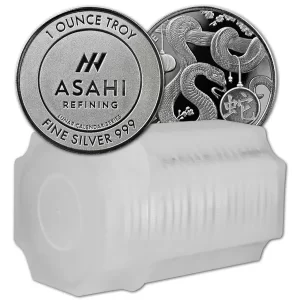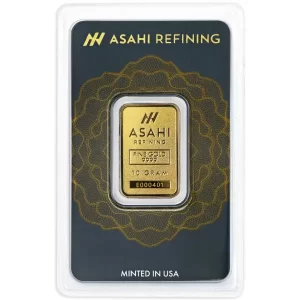Throughout history gold has been seen as symbol of wealth and has been a form of investment. Billions of people around the world are attracted to the yellow metal for its intrinsic value, low risk investment potential, and of course its historical value. Moreover, when looking at the gold market, both investors and collectors are faced with the decision between owning collectible gold items or investment grade gold bullion. By having an understanding of both types of gold you can make a better and more informed decision that will align with your financial goals and interests.
Investment Grade Gold Bullion
When we discuss investment grade gold bullion we are referring to gold in its purest form. We will see these typically coming in the shape of bars, coins, or ingots. Since these are purely for investment purposes, their value is based on their gold content as well as the market price of gold at the time. Investors typically purchase investment grade gold bullion for it’s wealth preserving attributes such as being a hedge against inflation, currency devaluation and being strong during times of economic uncertainty.
To qualify as investment-grade gold, the purity has to be 99.5% pure or higher, also known as 24 karat gold. Moreover, investment grade gold bullion typically has the best liquidity as it is recognized worldwide and can easily be bought or sold anywhere. Additionally, when working out pricing for investment grade gold bullion, it is directly related to the market value of gold which makes it very easy for investors to track and predict its value. Thus, making investment grade gold perfectly suited for those who are looking for a tangible asset that has intrinsic value, and will retain its value overtime. It is great for those who are looking to enter into the precious metals world or simply even seasoned investors who are looking to diversify their investment portfolio.
Collectible Gold
When discussing collectible gold it refers to gold items that have value beyond its metal content. These typically consist of rare coins, historical artifacts, and special edition coins that are released by mints and refineries around the world. There are several different factors that determined price of collectible gold, they include; rarity, condition, historical significance, and collector demand.
Rather than discussing purity, when looking at collectible gold items we look at rarity instead. Simply put lower the supply, the more desirable a collectible gold item becomes. Additionally, things like condition can play factors one determining price, such as, items in better condition tend to fetch higher prices. Moreover, another major factor would be the historical significance. Gold items that have played a role or have some sort of a story associated to them can make them more sought after, which would drive up price. Finally, the main determining factor on price when it comes to collectible gold would be the demand which can fluctuate based on trends within the collector’s community.
Making an Informed Decision
It is always imperative that you make the right decision when investing your money, whether it is as an investment or as a collector’s item. It all comes down to your portfolio goals and what you want to add into your collection. By having a strong understanding of both investment grade gold bullion as well as collectors gold items you will be able to make a better decision on your next gold purchase.
 Hi,
Hi,





















